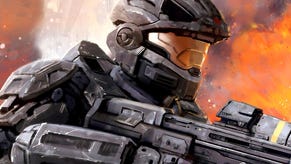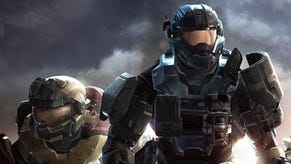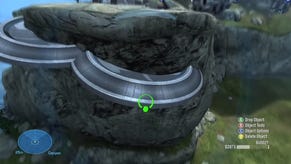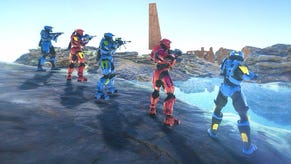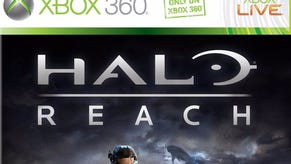Halo: Reach
For the stars.
You'll be wielding these half-familiar tools as the sixth member of Noble Team, a squad of Spartan-IIIs, the slightly less godlike (and less tall) successors to Master Chief's towering Spartan-II. This is where ODST's influence is most obvious - Bungie stresses it wants to tell a helmets-off human story of comrades in arms, not one of a gruff, Clint Eastwood-style lone gunman. Your squad-mates Carter (leader), Kat (second), Jorge (heavy), Emile ("darker") and Jun (sniper) fill out the cast, while you, as fresh replacement Noble Six, retain some of that abstracted anonymity that made Master Chief's huge boots so easy to fill. You'll be able to customise your warrior's appearance considerably for both campaign and multiplayer; in co-op, which supports four players online and two in split-screen once more, you'll play as a squad of Sixes rather than assuming the other roles.
Jarrard and Lehto and the video they showed at X10 make a big deal of Bungie's overhaul of its engine with regard to visual detail and animation, including motion capture for the first time. It's to bring the drama to life, they say, although it will also have significant gameplay implications, with the new animation rig giving AI characters much more flexibility and fluidity of action.
Nevertheless, we can't recall the last time a sequel was sold to us so emphatically on the promise of improved visuals and scale above all else. The (admittedly wonderful) new weapon and character models are pored over pornographically, and the words "generational leap forward", "upgrade", "complete overhaul", and above all "more" keep cropping up. Four times as many polygons in characters as Halo 3. Particles in the thousands rather than hundreds.
It almost sounds defensive. "Well... we realised that we needed to compete against quite a number of other titles," admits Lehto, the subtext being that Halo hasn't been a visual powerhouse for some years now. "It really did require us to rebuild nearly everything across the board."
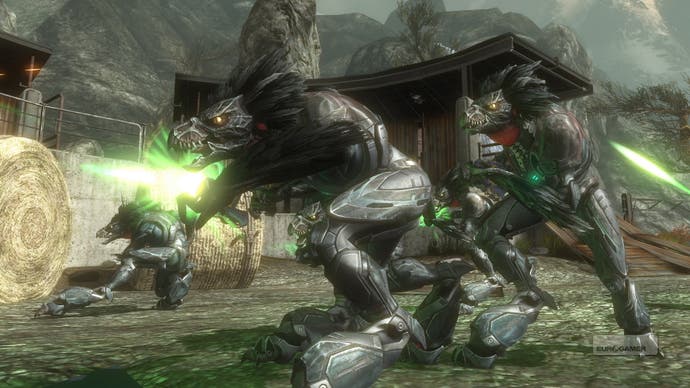
Although some of the footage shown is rough, the improvements are clear, massive, and naturally very welcome. It has a strikingly different mood and colour palette to previous Haloes' neon tones - grittier and more muted. "The story we're telling is definitely darker," says Lehto. "So we'll use colour. We'll use it to really impact the player's experience and help drive their emotional response. And we definitely are taking more tonal control of that kind of thing... That said, it's not a drab or dreary look and feel. That's not Halo."
More exciting still is the increased number of AIs this engine can handle - four Spartans, the player and eight marines against thirty or so Covenant is given as an example. As long as the improvements come without any cost to the openness or scale of battle, Halo devotees can rest easy, and indeed Bungie claims to be pushing this further in most instances.
In perhaps the single most significant nod to Combat Evolved, the Covenant Elite is once more the principal enemy - always a more worthy and threatening adversary than the hateful Brute, with more cunning, elegance and power (if only in our heads). Cuddly allies by the time Halo 3 concluded, it's great to see them restored to fearsome status. They're joined by old, new and redesigned enemies, including a comically heavily-armoured Grunt and a feathery, much more aggressive cousin to the Jackal.
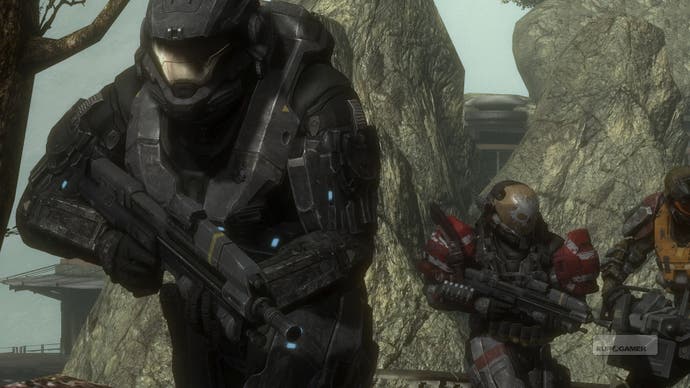
As ever, you can take all these creatures down with one-shot melee kills from behind, although these now trigger a short third-person animation. It adds impact in single-player, but its true purpose must be to make the melee a slower and thus more high-risk move in multiplayer.
Bungie's not saying much about gametypes - some returning, some new, naturally - or any kind of overarching structure for multiplayer. It seems unlikely there'll be a Call of Duty-style levelling system although Jarrard says there are plans to "foster and reward player investment". All the maps will be locations from the campaign, although maybe at different times of day and night. We're given a tour of Power House, a hydroelectric dam complex, and besides the obvious graphical improvement it looks like classic Halo map design - varied spaces, intuitive and easily memorised. We'll be exploring it and others come the public beta on 3rd May.
For all the technological hubris, Reach's X10 showing was oddly low-key. There was no silver-bullet feature or startling revelation - certainly not to match that old ham across the hall. Bungie's certain to be saving something special for E3, but it's not just PR planning. The fact is, the developer wants Reach to be the über-Halo, blending ODST's narrative humanity, 2's all-conquering multiplayer, and 3's online platform with, above all, the electric freedom and scale of Halo: Combat Evolved. In that sense - the best possible sense - we've seen and heard it all before.
Halo: Reach is due out exclusively for Xbox 360 this autumn and will be preceded by a multiplayer beta on 3rd May, available to anyone who bought Halo 3: ODST.



